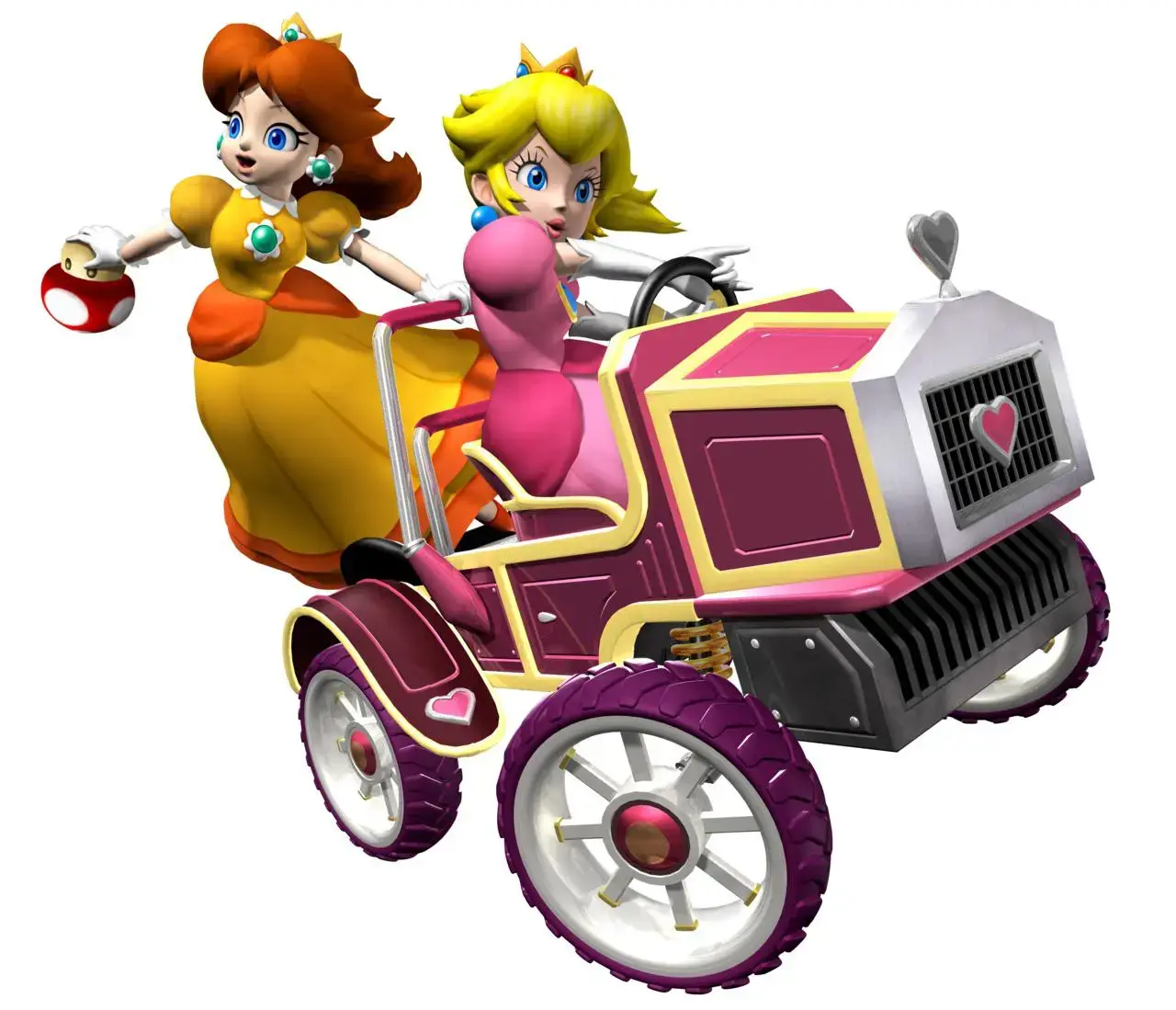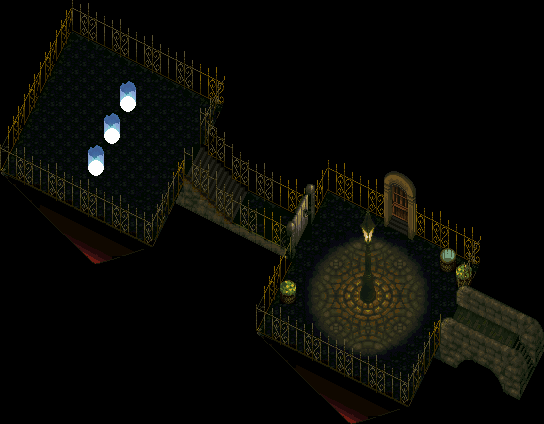I can only assume they’re referencing the recent hack and subsequent leak of data from Game Freak, including the code for several Pokémon games and some absolutely wild in-universe lore seemingly written by Game Freak employees.
- 0 Posts
- 58 Comments
Whoops, your party put the meteors next to each other again. No prog for you this week!
^Disclaimer: ^I ^never ^made ^it ^past ^T5 ^“on-content” ^but ^I ^heard ^the ^horror ^stories

 2·1 month ago
2·1 month ago+1 for Archinstall. I’m a Linux noob and getting everything set up was a cinch. Even had a spot to put in my address so I can get my first pair of thigh length striped socks from the AUR.
^that ^was ^a ^joke.

 1·1 month ago
1·1 month agoOh hey, I was having this issue. Changed the audio to OpenAL, restarted, and haven’t had any problems since. Might be worth a try if you haven’t already.
I feel this pretty acutely. But I’ve tried to change the way I approach it. When I randomly remember my cringe moments, and I start feeling like I’m going to be obsessing, I try to think about how I’d react if it was a friend of mine telling me about some stupid thing they did forever ago instead of me. That can be enough sometimes for me to stop and say (sometimes out loud, it helps) “That was forever ago and yeah, it was stupid, but you learned.” And it helps. I can’t always move past it, but it seems like it works more often than it doesn’t. If that makes sense.
Yeah, you did some stupid shit. But guess what! If you did it more than 7 years ago, biologically speaking you’re technically a whole-ass different person now. I don’t know if this will help anyone, but I hope it does.
Daisy for Kart. Daisy for Smash.

Hi, I’m Daisy.
(Jokes aside, probably the closest thing I have to a main in Smash is Hero)

 6·2 months ago
6·2 months agoScarlet Maiden is great too if you’re a fan of Rogue Legacy.
…uh, I’ve heard.
Deflection via humor would be my guess
FunkFPV, is that you?
Kidding. Sounds like you’re still mostly winning though, good on ya.
I have this one too and I love it. All it’s really missing is a way to remap the back paddles to non-controller buttons and it’d be an easy 10/10. As it is, though, 8.5 or 9, still very very good.
Fair enough. I think it’s safe to say that my reply was a little heated. You are, of course, correct. I will edit my comment.
I had to look that up, but you are correct. He said it while out promoting 2049. Thank you for bringing that to my attention.
Of course they are! I never disagreed with that. They are “more human than human”. That’s not even a counter argument to what I said, which is “this one specific human, who has basically forgotten how to BE human, rediscovers the joy of humanity through his interactions with non-humans who are ironically more human than he is”.
DECKARD👏 IS👏 NOT👏A👏 REPLICANT👏
I will bang this gong 'til the day I die.
The whole point of the movie, besides the cyberpunk dystopia that it created and popularized, is that Deckard is a HUMAN who acts like a ROBOT. He has no joy, no purpose, no meaning. And he rediscovers all of that, ironically, from his interactions with replicants - Roy Batty and Rachael most of all. It’s the Sarah Connor, end of Terminator 2 thought that “if a machine - a Terminator - can learn the meaning of life, perhaps there’s hope for the rest of us.”
And that DOESN’T FUCKING WORK if Deckard is a replicant. Philip K Dick, Harrison Ford, EVERYONE on the production EXCEPT Ridley Scott either knew this or figured it out. But because Mr. Auteur decided to share his braindead take and even cut a scene from a whole-ass other movie into Blade Runner to make you think MAYBE the robot-killer cop is himself a robot because “whoa man how mind-blowing”, now we have to get people saying that’s how it is for the rest of humanity.
Deckard is not a replicant. END OF.
edit: it has been pointed out to me that Harrison has reversed his stance on whether Deckard is a replicant, and my last sentence was factually incorrect in that there IS, of course, ambiguity in the film about who’s a replicant or not. Making Deckard into one, IMO, is still a braindead take that makes the movie subjectively worse, but I should still try to be accurate.
Speaking as someone who has recently gone through this headache: if you’re fortunate enough to have your games on their own partition, you will probably want to migrate said partition over to a Linux filesystem (ext4, btrfs, etc.) sooner rather than later. Particularly for Steam games - it’s possible to mount NTFS partitions on Linux and you might even be able to get the partition to mount as read/write somewhat reliably, but getting Steam on Linux to parse those directories and read the installed games is… … well, it isn’t worth it, frankly. Easier to just bite the bullet and be done with it.
That was the most difficult part of transitioning to Linux for me, though. Most everything else either worked out of the box or was a breeze to set up. Even the printer - go figure. Anyway. You got this!

 3·2 months ago
3·2 months agoOoh, I’m torn. They’re both NES “games” - Rocky & Bullwinkle had sluggish controls, awful hitboxes, and I can only describe its graphics AND sound design as offensive. That said, at least it technically played like a game. Where’s Waldo didn’t even have that. I think Where’s Waldo is the worst, but it’s close.

 21·3 months ago
21·3 months agoI have a really basic one. Some caveats - I’ve also used Windows my whole life (up until about 2 weeks ago), but I’m comfortable getting into a command prompt and/or powershell to tweak stuff. Also, I had a spare SSD lying around and extra space on my installed HDD.
Step 0 (arguably the hardest): pick your distro.
I went with Arch - but if you want something Arch-based but a little less barebones, you might do fine with Manjaro or EndeavourOS. This is totally up to you though (I’m in the process of migrating my wife to openSUSE). “But Gaspar, you crazy old man,” you may ask, “what all is out there?” Well… there’s a lot. Over 600 active distros, if you believe this random-ass tech blog, and countless other hundreds (or thousands) that are old, outdated, no longer supported, or were cooked up by one dude specifically for their own system and will never be uploaded. There are a couple of tools that can help narrow this down, but you’re really just going to have to poke around and see what appeals to you.Step 1: Test in a virtual machine first.
This is optional, but it may help you make up your mind: pick a few different distros and install them in virtual machines, using VirtualBox or something. You can poke around in there and see how things “feel” before you make up your mind, without worrying about messing something up.Step 2: Load up a USB stick.
Ventoy. You don’t HAVE to use this, strictly speaking. You can just get Etcher or Rufus or something, use them to write your chosen distro’s ISO to a USB stick, and install that way. But Ventoy sets up a separate partition on your USB stick where you can grab a bunch of different ISOs and drag-and-drop in there, and load up whichever one you want. Pretty handy.Step 3: Go into Disk Management and free up a partition for your chosen distro.
This is up to your taste (I just installed it into its own whole SSD) but I’d set aside at least 256GB for the OS and the packages you’ll want to install once you get in there. Again, though, YMMV.Step 4: Install that sucker!
OK, now boot into your ISO through the USB stick you prepared earlier and install the sucker on your new partition. Most distros will have you set up a root password and give you the option to create a user. YOU WANT TO DO THIS. You do not want to always access your system as root - that way lies madness (and it’s wildly insecure). You may also get a choice of desktop environments. This is up to your taste but I went with KDE Plasma because I have a Steam Deck (which also runs on a variant of Arch) and I was already used to the interface.Step 5: Migration start
After you’ve gotten set up and a little comfortable poking around (maybe you already figured out how you want to start setting up when you were testing VMs in Step 1 earlier), it’s time to start partitioning. There are a few GUI partition managers you can use - I used KDE Partition Manager, but there’s also Gparted and a few others.Once you’re in whichever program you’ve chosen to set up your partitions, you’ll want to proceed in this basic order:
- Shrink your Windows partition(s) if they are taking up the entire drive, and you have the space to do so (if not, we’ll get to that)
- Create new Linux partitions in the filesystem of your choice (again, will explain this shortly)
- Mount both your Windows and Linux partitions and copy from one to the other
- Once you’re happy that everything’s copied over, delete the Windows partition(s) (unless you’re planning on dual-booting, in which case keep the partition with your Windows install)
- Finally, extend your new Linux partition(s) to cover the whole drive
Step 6: Wait what?
Well, maybe your Windows drive is full, or there isn’t enough space on the new partition to copy everything over. This is why I mentioned the spare SSD. You can plug that in, if you have one, and use it as a placeholder to copy your files to while you reformat your drive and then copy everything back.Also - filesystem of your choice? Well, Linux has a few options for partition types: ext4, btrfs, zfs, and a bunch of others. You’ll have to check them out and see which makes the most sense for you. I personally just reformatted everything as btrfs. It may not have been the most efficient choice, but it’s worked out for me so far. The main issue here is the standard Windows NTFS file system. Now - you CAN keep a lot of your data on an NTFS partition, especially if you want to dual boot Windows for a while and get used to things while still having that familiar lifeline (or, like me, if you have some games that still just don’t play well with Linux yet). Here’s the thing, though: thanks to a driver you can download, you can fairly easily get Windows to mount your btrfs partitions (I did it and even still have my drive letter associations). Plus, if you are a heavy Steam gamer, while you CAN get Steam on Linux to read your NTFS partitions… it’s a huge headache, and it isn’t worth it IMO (and, in my experience, I couldn’t get my NTFS partitions to STAY mounted as read/write). Better to just bite the bullet.
If you are planning on dual-booting, of course your Windows partition will still need to be NTFS. But if you have the disk storage to copy everything over, you can have everything else converted to whatever combination of Linux partitions you want in a few days (took me about 3, but I also had 10-ish TB to copy over and I had to do half of that twice).
Final Thoughts
Depending on whichever flavor of Linux you opted for, you may boot into GRUB, which is a bootloader that gives you some pretty neat configuration options - one of those options is the ability to boot into all your existing OS installs, including your Windows installation. Once you get a bit more familiar with Linux you may wish to make your Linux partition the default, secure in the knowledge that whenever you want, you can just hit down a couple of times, then Enter, and boom - you’re in Windows. Just be careful, because Windows recently pushed an update that may have broken this currently. I think it’s a nice touch, though.I have rambled on long enough at this point and I’m sure someone else can point out several hundred things I missed - again, I am still a Linux newbie. But the best way to learn this stuff is just to do it, and depending on your comfort level and familiarity with Windows it shouldn’t take you long to get up to speed. Good luck!
The “AI” garbage on the horizon finally did it for me. I’ve been using Windows for 30-some-odd years (and DOS before that) and it always had a quirk or two but it mostly just worked, and that was enough for me. Hell, I even jumped on Win 11 when it was still in Insider Preview, just because I wanted the latest. And despite everyone always complaining about 11, for the most part, it did for me as Windows has always done - it just worked, so if it ain’t broke, why fix it?
Not that I hated Linux, I just always seemed to have an excuse. “Oh, the last time I tried to install it I was stuck at a CLI” sure, almost 20 years ago. “Well, I’m a huge gamer and Linux just doesn’t have the support”, “Man, KDE Plasma on the Steam Deck runs great and looks a lot like a fresh Windows install… ahhh, it’d be such a pain to migrate though.”
Anyway, I set up Arch on a “dual boot” partition a couple weeks ago I say “dual boot” because I haven’t booted into Windows in a week. Feels good, man. I should have done it sooner.
I will say though, if any other potential Windows refugees are reading… Migrate your Steam library to an ext4/btrfs/other Linux partition. You can successfully mount your Windows NTFS partitions. You might even be able to get them to mount as read/write. You might even be able to get Steam to read the directories! But it’s not worth the headache, and in my experience it’s a lot easier to get Windows to mount a btrfs partition. My Windows install is the last NTFS partition on my system, and I’ll keep it around for a while in case I run into something that just won’t play nice with Linux, but that’s it.
“But we’ve already approved your pardon!”
10/10, no notes.






Free software had a non-free extra bit that it technically didn’t need. Accidentally got changed to need the non-free part in order to run which caused news stories. Now the change has been reverted so it’s free again.